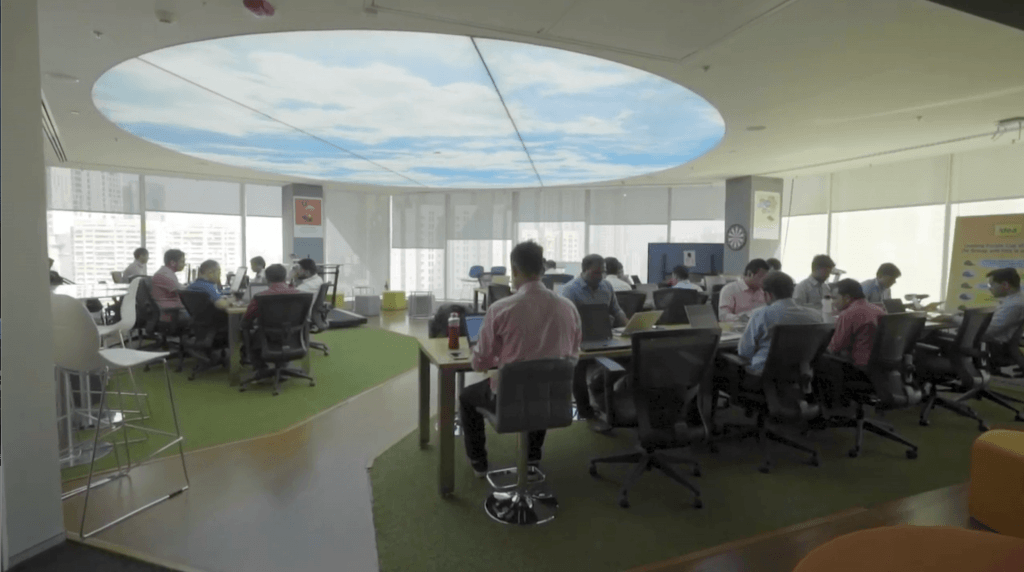What visionary decisions did a bank, a telco and an IT consultancy make to reap untold benefits in business excellence?
While no one could have predicted or planned for the severe societal, economic and personal ramifications of the current pandemic, many of the changes we see today have—in actuality—merely been accelerated and not created, by the crisis.
For some companies in the Asia-Pacific (APAC) region, plans to deliver outcomes such as better customer experience, faster time-to-market and lowered operating costs were already well underway before the pandemic even took hold. Their IT solutions needed to be flexible, scalable and cloud-native—especially so in a region with diverse cultures and levels of economic maturity and governance. And for many of them, the holistic solutions that met such varied conditions have been found in open source.
Let’s find out how a bank, a telco and an IT consultancy in APAC proved this point and received recognition at the recent Red Hat Innovation Awards for their shrewd support of open source technologies and the innovation they unfettered.
All branch services on a smart tablet
Alliance Bank Malaysia Berhad and its subsidiaries, Alliance Investment Bank Berhad and Alliance Islamic Bank Berhad, are an integrated financial services group offering banking and financial services. Their service philosophy is about being empathetic to customers’ needs and delivering what they need—innovative, digital solutions that are fast, simple, and responsive.
Although the group was meeting its customer service goals, it was not resting on its laurels. Alliance Bank wanted to innovate and scale its digital services at a faster pace than ever. They needed tighter cross-team collaboration and an agile development platform that would facilitate streamlined, standardized processes with increased workflow simplicity and security.
It was decided that they needed an open architecture container platform using agile methodology to meet cost and risk expectations. By working with Red Hat Consulting, Alliance Bank developed a microservices-based architecture to create one large project instead of multiple individual projects, on a dedicated set of hardware.
To support its agile strategy, Alliance Bank chose an open container platform to allow collaboration across teams. That platform then allowed the bank to put all branch products and services on a smart tablet for its staff to use with customer. When launched, this ‘branch-in-tablet’ project reduced account-opening time by 70% and increased the availability of staff to customers by 75%. With agile practices, project delivery now takes two to six months instead of six to eighteen months with the previous waterfall method.
By removing redundant processes that require physical space, Alliance Bank has developed a culture of agile collaboration and rapid innovation while enhancing the customer experience.
Powering a billion users with open source
Vodafone Idea Limited (VIL) is a leading telecom operator in India. Its pan-India telecom operations cover more than 1 billion people and reach more than 700 districts in India, providing connectivity to more than 300 million mobile customers and leading enterprise clients.
Not satisfied with having the fastest 4G network across large parts of India, VIL wanted to drive more consistent innovation, foster new solutions and extend the platform to start-ups and developers. It also hoped to shorten deployment times from months to weeks to days.
Working with Red Hat, VIL thus established a Universal Network Cloud to improve DevOps and connectivity points. With the largest distributed cloud deployment in the country, VIL will be rapidly transforming its 100+ data centers across this ‘Universal Cloud’ where a shared software platform is capable of running multiple workloads e.g., Network, IT and third party applications across its distributed cloud locations.
The telco used the OpenStack Platform to design efficient pods that can be geographically-distributed and taken closer to the end-users, thus reducing latency and enabling an optimal user experience. Then, using open APIs, VIL is now able to deliver actionable insights to its enterprise users, and potentially gain a competitive advantage.

In addition, VIL will further deploy the Red Hat Ansible Automation Platform to automate workflows and extend self-provisioning to enterprise customers. The telco plans to work closely with the Red Hat Global Services team to build new capabilities and execute these initiatives.
As a result, VIL has achieved 85% cost reduction and shorter deployment times, with widely-distributed locations running massive commercial traffic (more than 80 VIL Universal Cloud locations, serving more than 30 million VOLTE subscribers and data traffic upwards of 5 terabits per second).
VIL’s next priority is to rapidly expand this ‘network-as-a-platform’, enable a hybrid environment, help third-party applications run distributed workloads, and self-orchestrate network slices using standard APIs.
An IT consultancy that walks the talk
Tata Consultancy Services (TCS) is an IT services, consulting, and business solutions organization that has partnered with many of the world’s largest businesses in their transformation journeys.
In line with its own Enterprise Agile 2020 vision, TCS’s IT group wanted to create a resilient and adaptable infrastructure to support the company’s transformation and showcase this to its clientele.
For that to happen, its legacy infrastructure had to be upgraded with a technology platform that is open, scalable, resilient, with more compute capacity, lower cost of ownership, no vendor lock-in, and offers open collaboration with third party vendors.
By working with Red Hat, TCS’s Infrastructure Reimagination project was delivered through a scaled agile framework to collaborate better and deliver faster. Multiple migration methodologies were deployed to support scale and complexity. In addition, TCS enhanced its technology platform, modernizing legacy infrastructure with Red Hat Enterprise Linux and the Red Hat JBoss Enterprise Application Platform to enable the cloud-native architecture. TCS also adopted a digital core architecture to power its application.
With the new solution, TCS’ concept-to-release cycle has seen a marked reduction—from days to hours—allowing the company to quickly meet dynamic customer demands. Furthermore, without vendor lock-in, TCS has decreased its total cost of ownership while significantly increasing compute power.
TCS has also reduced its infrastructure footprint and power consumption. With this solution, TCS has increased productivity and performance while reducing complexity.
